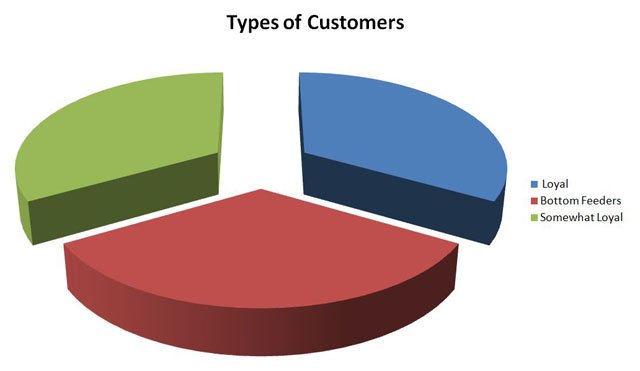When Pricing Fuel, Use Numbers to Your Advantage
/“You can't do today's job with yesterday's methods and be in business tomorrow.” – Anonymous
 We know the pricing game all too well. Gas stations and auto dealerships have conditioned us to react to pricing of a product or service by offering a perception of a good deal.
We know the pricing game all too well. Gas stations and auto dealerships have conditioned us to react to pricing of a product or service by offering a perception of a good deal.
In the FBO fuel pricing arena, we tend to play the same game.
In a previous blog post, FBO Fuel Pricing: Seeking a Silver Bullet, we discussed some pricing theory and came up with some ideas to find the silver bullet — which is the best price.
In the FBO business today, some customers call ahead for fuel prices, seek to use contract fuel suppliers and try to negotiate when they arrive on your ramp. We would like our customers to believe that our prices are well thought out and not just some arbitrary posted numbers.
Knowing how customers interpret numbers can help your FBO make stronger pricing decisions. What we would like to discuss here are some thoughts that go through people’s minds when they are looking to purchase. Consider these ideas drawn from “The Importance of Numbers,” written by Geoff Williams and published in Go magazine:
Make Your Prices Easy to Remember
If you make your prices easier to remember, comparison shoppers should think of your FBO more readily. Your potential to complete a sale increases.
The numbers 0 and 5 are remembered easily. For example, $4.70 for a gallon of fuel is easier to remember than $4.72, and $5.50 sticks better than $5.58.
Precise Numbers Feel Firm
Precise numbers seem less flexible to consumers than rounded numbers, according to a study by a social psychologist named Matt Wallaert. If you price your fuel at $6.00 per gallon, your price might seem flexible. If your price is $6.23, it appears to be non-negotiable.
Minds Play Tricks
Our minds play tricks, according to DePaul University professor and pricing expert Tim Smith. Auto gasoline priced at $3.699 is really $3.70 a gallon. In the Western world, our languages read left to right, so to some extent, we encode the lower numbers on the left first. In addition, we seek the best deal from a rational point of view, but we perceive emotionally that we have “saved” by not paying $3.70 a gallon.
We tend to have a mindset when it comes to prices. It is incumbent on us to break out of normal thought patterns and be original with our pricing proposals to pilots. If you know how people view numbers, you can predict their reaction to prices and, therefore, price more strategically. For example, above a certain threshold — say $5.00 per gallon — people will not react too differently to $5.25 or even $5.45 a gallon. They will not balk until you approach the next threshold, $6.00 per gallon. For maintenance services, on a higher price scale, $875 is better than $900, yet $825 will sell as well as $800.
 Blogger John Enticknap presents at the 2011 Florida Aviation Trades Association (FATA) annual conference.Much can be said about numbers and their importance to your pricing theory as well as your target margin — both gross and net. By keeping in mind some of the psychological factors discussed above, you have a better chance of making the sale.
Blogger John Enticknap presents at the 2011 Florida Aviation Trades Association (FATA) annual conference.Much can be said about numbers and their importance to your pricing theory as well as your target margin — both gross and net. By keeping in mind some of the psychological factors discussed above, you have a better chance of making the sale.
As our anonymous quote states, we must keep an open mind and study new business ideas and methods to be successful. Yes, we see many of the same business situations time and again in the FBO business, but that should not allow us to get complacent or not try new thinking.
Stay flexible, and stay informed.
Please let me know what you think, and share your ideas. Please email me at jenticknap@bellsouth.net.
FBO Success Seminar Registration
The next NATA FBO Success Seminar is scheduled for Nov. 8-10 in Atlanta. Register at nata.aero.
John Enticknap
John Enticknap founded Aviation Business Strategies Group in 2006 following a distinguished career in aviation fueling and FBO management, including as president of Mercury Air Centers. He is the author of 10 Steps to Building a Profitable FBO and developed NATA’s acclaimed FBO Success Seminar Series.















